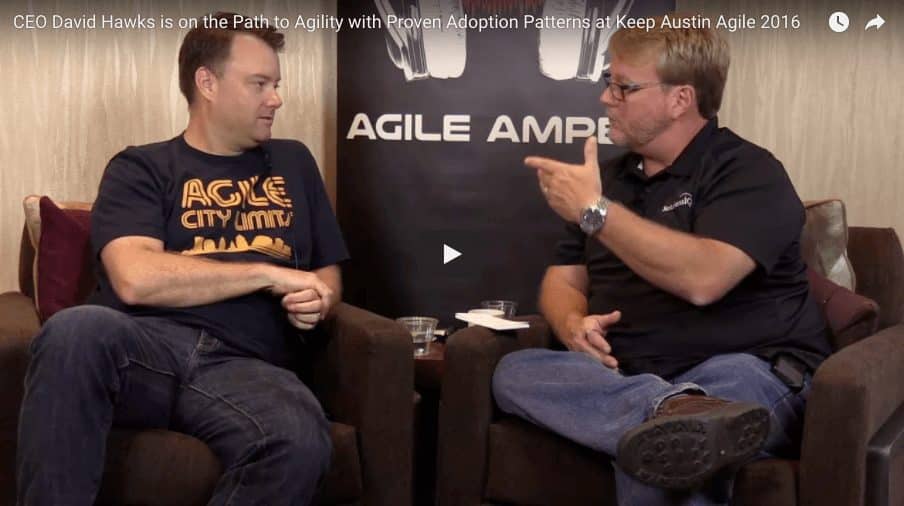Agile And The Death Of Annual Reviews

One of my (many) mantras is “an Agile team succeeds or fails together.” To elaborate, I mean that the stronger/more effective and weaker/less effective members of the team should all be combined to deliver more value. No more culture of fault and blame (“it’s all HIS fault”) or culture of heroism (“we can always count […]
5 Non-Agile TED Talks About Agile

It was 1984. Explorer, architect, and author Saul Wurman began to notice a convergence of multiple disciplines, and in an interview with Fast Company, Wurman noted that he saw what people in the groups did not. ‘They just didn’t see they were one group…they didn’t realize they were growing together. He decided to bring representatives […]
Giant Jenga + Agile Tips = Tower of Agility

Two weeks ago at Keep Austin Agile 2016 (can you believe it’s already been two weeks), attendants stopped by our booth to spin the prize wheel and play the “Tower of Agility” aka giant Jenga. They also imparted words of wisdom by writing Agile tips on the wooden blocks. We’ve compiled them below for your […]
How To Get Started With Story Points Via Affinity Estimation (And Cheat Sheet)

Once upon a time, there was a Scrum team that was new to the methodology. It was their first backlog grooming session and they needed to prioritize their newly written user stories. One of the team members remembered story points during their Scrum training. “Should we estimate?” she asked? “Yes, but how do we get […]
Agile Amped, Agile Velocity Style

Last week at Keep Austin Agile 2016 at the JW Marriot, May 26th, 2016, David Hawks and Doc List sat down to podcast with SolutionsIQ to discuss their Agile Amped respective sessions at this year’s conference. We will have the full recorded sessions and presentations available in the next few weeks. For now, here’s a […]
#SGFLA – To Infinity And Beyond…

My first Scrum Gathering was a great time! I met so many interesting, smart, and kind people from the Agile community from all over the world. While there were big names who have contributed and helped grow the community over the years, a majority of attendants were like me: first-timers. According to Scrum Alliance, 55% […]
VersionOne 2016 State of Agile Report – Agile Has Hit Its 30’s

Agile is no longer the kid it once was. From 1957 to 2016, Agile has progressed through the stages of cute kiddo, awkward teenager, eager twenty-something, to mature thirty-ish adult. With this new stage in life comes a lot of positives (steady growth, deepening maturity) but also some negatives (hesitancy, failed adoptions) as shown in the 2016 report.
Here are some of the most telling trends…
Is The Tesla Model 3 A Lean Mean Driving Machine?

Tesla unveiled the next addition to its premium electric vehicle family, the Model 3, last week. At $35,000, Elon Musk made good on his promise for an “affordable” EV option and the public has responded by exceeded expectations for the slow rollout. According to Bloomberg, there are more than 325,000 reservations giving Tesla Motors Inc […]
Adventures In Agile Marketing: The Editorial Calendar

When was the last time that your editorial calendar got a makeover? As a marketer before Agile (BA), my editorial calendar was pretty standard: title, info, status, and dates. It was the piece of data that, I now know, was a very waterfall way of creating content. Before Agile, I never realized how much risk […]
Shared CARGO™ And Successful Agile Teams

Books like Khoi Tu’s “Superteams” and articles in the Harvard Business Review discuss what makes successful, high-performing teams. In the Agileverse¹, we talk a lot about self-organizing teams, transparency, servant leadership, and the power of cross-functional teams. One of the important aspects of these teams is the sharing that occurs and how it leads to […]
